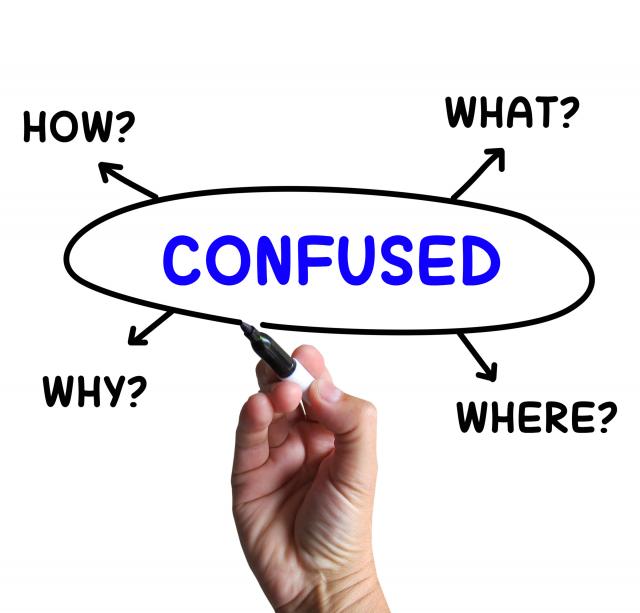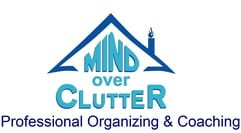Utilize these 15 statistics to enhance your life organization
As a Professional Organizer, I enjoy reading about statistics that explain why it is so hard to get organized and maintain the organization in a household. Sometimes people look back on their childhood and see a house that has a place for everything and everything in its place. Read these statistics. They explain changes that can be made in your lifestyle that will make it easier to be organized.

These statistics come from a newsletter published by Joshua Becker of the MInimalists.
1. The average American home has quadrupled in size over the last 100 years—from 700 square feet in the 1920s to 2,700 square feet in 2015. (source)
2. Still, more than a third of Americans rent self storage units—spending $38 billion every year. (source)
3. The average American shopper buys 60% more clothing items than they did 15 years ago but keeps them for half as long. The average garment may be worn as few as ten times before disposal. (source)
4. The average American woman has 103 items of clothing in her closet. In 1930, the average American owned just nine outfits. (source / source)
5. Yet, American households spend, on average, almost $1,500 on clothing every year.
6. No wonder the average American throws away about 81 pounds of clothing every year!
7. American credit card debt now exceeds $1 trillion for the first time—twice as much credit card debt as just 10 years ago.
8. Americans make one impulse purchase every two days, spending up to $5400 annually ($324,000 over their lifetime).
9. Americans spend over $8 billion every year on unwanted gifts.
10. The average American household now owns 25 connected devices.
11. The average person in Great Britain owns 80 books which they haven’t read.
12. Each year, 119 billion pounds of food is wasted in the United States. That equates to 130 billion meals and more than $408 billion in food thrown away each year. Shockingly, nearly 40% of all food in America is wasted.
13. Even though we stock our kitchens with food we don’t eat, Americans now spend more on dining out than on groceries.
14. 80% of the items we own are never used.
15. Americans spend $18,000 per year, per person, on nonessentials.
As you read these statistics think about how many of them apply to your lifestyle. What changes can you make to reduce how much you own that you are not using? Reducing what you own saves you money by buying less, gives you more time to do other things than organizing your stuff and helps you to develop new habits that lead to a healthier lifestyle.
In the comments let me know which statistic surprised you the most.

Julie Stobbe is a Trained Professional Organizer and Lifestyle Organizing Coach who brings happiness to homes and organization to offices, coaching you virtually using Zoom. She has been working with clients since 2006 to provide customized organizing solutions to suit their individual needs and situations. She uses her love of teaching to reduce clutter, in your home, office, mind and time. She guides and supports you to be accountable for your time, to complete projects and to reach your goals. If you’re in a difficult transition Julie can coach you to break-free of emotional clutter constraining you from living life on your terms. Online courses are available to help instruct, coach and support your organizing projects. Get started by downloading Tips for Reorganizing 9 Rooms.
Contact her at julie@mindoverclutter.ca


This one fascinates me. The average American woman has 103 items of clothing in her closet. In 1930, the average American owned just nine outfits.
I recently decided to group my clothing into outfits and found that I had a total of 2 weeks’ worth of outfits. And, this doesn’t include workout gear that back in the 1930s, there were probably only a few people wearing those items.
Creating outfits has significantly reduced my shopping for clothes. I was able to limit where my extra clothes were stored and reduce everything to one side of my walk-in closet.
Knowing what items go well together make it easier to decide if you need to purchase more clothing. It also makes it easier to get dressed. Less decisions need to be made, which outfit to wear, one decision, not which pants or skirt or dress, which top, which jacket or sweater etc., not 6 decisions. I found the statistics interesting.
Like you, I love stats! And the ones you shared from Joshua are fantastic and eye-opening! They all speak to us overconsuming, wasting, and ultimately, feeling overwhelmed. The ‘stuff’ of life takes time to manage, depletes our financial resources, and isn’t always used or valued.
I hope these statistics help people to think about what they need and use. One of the first steps in understand what’s stopping you from getting organized is realizing you have too much stuff. This article shows some of the problem areas for people to thinks about.
Wow, these are some pretty impressive statistics. That one about how much we spend on unwanted gifts is pretty astounding. I guess we are all doing our part to keep the economy going. Wowza. The sad part is “unwanted.” That feels so wasteful. I see this with clients, and there is guilt about letting gifts go, making the whole problem worse.
Definitely going to be saving and sharing this one. Thanks so much!
You’re welcome Seana. As I get older I feel like I receive more unwanted gifts. i think it is because I want to have less and that is difficult for people to understand that I am happy with no gift. When I give gifts I try to give ones that”self distruct”, flowers, food, movie tickets etc. They still maybe unwanted.
It’s amazing that our homes have gotten so big, but despite that, a huge chunk of the public still needs a storage unit. One related statistic I would be curious about is how many people don’t have space in their garage to park their cars. If we have so much stuff, how can we know what we have when a need arises?
I know I try to simplify as much as I can, but the constant barrage of new exciting gadgets that promise to make your life easier, or a cool trinket makes the impulse to buy so strong!
There was a time when garages were meant for cars. Now a days I see garages as an onsite storage unit. With families having a hard time buying homes so they buy smaller ones they can afford, the garage becomes a storage area. Any space inside the home needs to be used for living space. It is amazing how the size of houses has increased over time.
These are fascinating statistics, and they ring true for my clients, but it’s weird to see where I line up against them. My one-person apartment is larger than the average home 100 years ago, but the house I grew up in (half a century ago) is larger than the average of today. I never make any impulse purchases except for food, and that’s rarely more than one or two $5 purchases a week.
I’m sure I own much more than 103 articles of clothing, but not counting “foundation garments,” I probably only buy a couple of articles of clothing a year, and certainly less than a $100 (let alone $1500). I can still fit into clothes from 20+ years ago, so I still wear that. On the other side of things, pre-pandemic, I definitely spent more on dining out (or prepared food) than on groceries because I hate cooking and wasted more food that way — now I know that I will never actually eat that random vegetable that requires any kind of prep!
I understand the perils of “fast fashion,” but why would anyone ever throw away clothing when there are people living without food, shelter, and ample clothing? And 25 connected devices? I’ve just walked around my house, and once I remembered to add my printer, I came up with 6! I wonder what devices I don’t own that everyone else does?!
I certainly hope seeing these statistics will shock people into being more mindful of what they purchase (and hold onto without consuming). Thanks for the wake-up call!
Thank you for sharing the analysis of your situation. You commented about devices. I have a client with 6 Televisions each has a DVD player and a VHS player attached. In general manypeople keep old devises around instead of moving the information to the new devise and recycling or sellthe other devise. GPS, computers and phones can pile up over the years. I love how you control your lifestyle to benefit your budget, living space and personality.
Wow–what eye-opening statistics!
I was surprised and taken aback by the amount of food that gets wasted on a yearly basis. Thank goodness there are organizations that help get food that would otherwise be wasted into the hands of those who need it.
During the pandemic when my husband and kids were home (and eating all the time) I developed a mantra that they still chant today: The ‘L’ in Lunch stands for ‘Leftovers!’ A perfect way to avoid wasting food is to eat it!
Thank you for the chuckle. L is for leftovers. I do that for my lunch also. I call them planned overs making sure to set aside a portion for a lunch. When my kids were at home leftovers where for snacks when they came home from sports and training for sports. It helped to make sure they were eating healthy and not grabbing chips.
Like the rest, these statistics are eye-opening. I was intrigued to read about the amount of money spent on impulse purchases.
Thank you very much for compiling them.
Statistics helps us to know where the problem areas are and make changes to our habits. If people would learn what their triggers are for impulse buying they could change that habit. FIrst they have to realize they do it, then change the behaviour that causes the buying and replace it with a new behaviour, window shopping. it is a lot of work, worth it in the end.